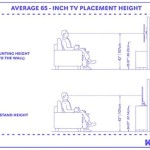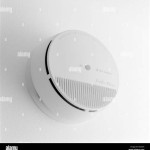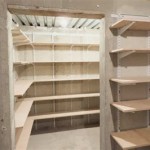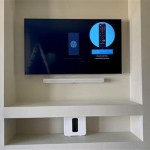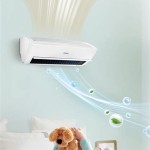Wall Mounted Kitchen Shelf Unit: Optimizing Space and Enhancing Functionality
The kitchen, often regarded as the heart of the home, is typically a space requiring meticulous organization. The efficient storage of cookware, utensils, spices, and other essential items is crucial for maintaining a functional and aesthetically pleasing environment. Wall-mounted kitchen shelf units offer a practical and versatile solution to address these storage needs, maximizing vertical space and contributing to a streamlined kitchen layout.
These units, available in a diverse range of materials, designs, and sizes, are designed to be affixed to the wall, freeing up valuable counter and floor space. This article explores the benefits, design considerations, installation procedures, and maintenance aspects of wall-mounted kitchen shelf units, providing a comprehensive overview for homeowners seeking to enhance their kitchen storage capabilities.
Benefits of Wall Mounted Kitchen Shelf Units
Wall-mounted kitchen shelf units offer a multitude of advantages that contribute to improved kitchen organization and functionality. These benefits extend beyond mere storage capacity, influencing the overall aesthetics and usability of the space.
One primary benefit is the optimization of space. Kitchens, particularly those in smaller homes or apartments, often suffer from limited counter and floor space. By utilizing vertical space, wall-mounted shelves effectively expand storage options without encroaching on the existing footprint. This can be particularly beneficial for storing frequently used items within easy reach, while keeping countertops clear for food preparation.
Furthermore, wall-mounted shelves enhance accessibility and organization. Items stored on these shelves are readily visible and easily accessible, promoting a more efficient workflow during cooking and meal preparation. Open shelving allows for quick identification of ingredients, cookware, and utensils, reducing the time spent searching for specific items. This streamlined access contributes to a more enjoyable and productive cooking experience.
Aesthetic appeal is another significant advantage. Wall-mounted shelves are available in a wide variety of styles, materials, and finishes, allowing homeowners to customize their kitchen décor. From rustic wooden shelves to sleek stainless steel units, there are options to complement any design aesthetic. Coordinating shelving with existing cabinetry and countertops can create a cohesive and visually appealing kitchen environment. Shelves can also be used to display decorative items, adding personality and character to the space.
Cleaning and maintenance are also simplified with wall-mounted shelves. Since they are elevated off the floor, cleaning around and underneath them is easier compared to floor-standing cabinets. This promotes better hygiene and reduces the accumulation of dust and debris. Open shelving also allows for better air circulation, preventing moisture buildup and reducing the risk of mold or mildew growth. Regular dusting and occasional cleaning with appropriate cleaning solutions are typically sufficient to maintain the appearance and cleanliness of wall-mounted shelves.
Finally, wall-mounted kitchen shelf units offer a cost-effective storage solution. Compared to the expense of installing new cabinets or undertaking a complete kitchen remodel, wall-mounted shelves provide a budget-friendly alternative for improving storage capacity and organization. The relatively low cost of materials and installation, combined with the long-term benefits of improved functionality and aesthetics, make wall-mounted shelves a valuable investment for homeowners seeking to enhance their kitchen space.
Design Considerations for Wall Mounted Kitchen Shelf Units
Selecting and installing wall-mounted kitchen shelf units requires careful consideration of several factors to ensure optimal functionality, aesthetics, and safety. These design considerations encompass various aspects, from material selection to placement and weight capacity.
Material selection is a crucial aspect of the design process. The choice of material should be guided by factors such as durability, aesthetics, and the intended use of the shelves. Wood is a popular choice due to its versatility and natural beauty. Solid wood shelves are strong and durable, while engineered wood products like plywood and MDF offer a more affordable alternative. Metal shelves, typically made of stainless steel or powder-coated steel, are known for their strength, durability, and resistance to moisture. Glass shelves can add a touch of elegance and sophistication, but require careful handling and may not be suitable for storing heavy items. The chosen material should complement the existing kitchen décor and withstand the expected use and environmental conditions.
Size and dimensions are also critical considerations. The size of the shelves should be proportionate to the available wall space and the items to be stored. Deeper shelves can accommodate larger items, while shallower shelves are ideal for smaller items like spices and condiments. The height and spacing between shelves should be carefully planned to ensure easy access and visibility. Consider the overall layout of the kitchen and the placement of existing cabinets and appliances when determining the optimal size and dimensions of the shelves. Avoid overcrowding the wall space and ensure that the shelves do not obstruct walkways or interfere with the use of other kitchen fixtures.
Weight capacity is a paramount safety concern. Before installing any wall-mounted shelves, it is essential to determine the maximum weight that the shelves can safely support. This weight capacity depends on the material of the shelves, the type of mounting hardware used, and the structural integrity of the wall. Consult manufacturer specifications and seek professional advice if necessary to ensure that the shelves are capable of supporting the intended load. Avoid overloading the shelves, as this can lead to structural failure and potential injury. Distribute the weight evenly across the shelves to minimize stress on any single point.
Placement and positioning are important for both functionality and aesthetics. Consider the proximity of the shelves to frequently used work areas, such as the stovetop, sink, and countertop. Placing shelves within easy reach of these areas can improve efficiency during cooking and meal preparation. Also, consider the visual impact of the shelves on the overall kitchen design. Align the shelves with existing cabinets and countertops to create a cohesive and balanced look. Use different shelf heights and depths to add visual interest and break up the monotony of uniform shelving. Consider the lighting in the kitchen and position the shelves to maximize the illumination of stored items.
Finally, style and aesthetics play a significant role in the overall design. The style of the shelves should complement the existing kitchen décor and reflect the homeowner's personal taste. Rustic wooden shelves can add warmth and character to a traditional kitchen, while sleek stainless steel shelves can enhance the modern appeal of a contemporary kitchen. A wide variety of shelf styles are available, including floating shelves, bracket shelves, and corner shelves. Choose shelves that enhance the overall aesthetic appeal of the kitchen and create a visually pleasing environment. Consider the finish and color of the shelves and how they coordinate with other kitchen elements, such as cabinets, countertops, and backsplashes.
Installation and Maintenance of Wall Mounted Kitchen Shelf Units
Proper installation and regular maintenance are essential for ensuring the longevity, safety, and optimal performance of wall-mounted kitchen shelf units. A well-executed installation guarantees stability and prevents accidents, while consistent maintenance preserves the appearance and structural integrity of the shelves.
Before commencing the installation process, gather all necessary tools and materials. These typically include a drill, level, stud finder, measuring tape, pencil, appropriate screws and anchors, and safety glasses. Ensuring you have all the necessary equipment prevents interruptions and streamlines the process. Consult the manufacturer's instructions for specific recommendations on the type and size of screws and anchors to use.
Locating wall studs is a crucial step in the installation process. Wall studs are the vertical framing members that provide structural support for the wall. Screwing directly into a stud provides a much stronger and more secure attachment than screwing into drywall alone. Use a stud finder to locate the studs behind the drywall. Mark the location of the studs with a pencil. If studs are not available at the desired location, use drywall anchors to provide additional support. Different types of drywall anchors are available, including plastic anchors, metal anchors, and toggle bolts. Choose anchors that are appropriate for the weight and type of material being supported.
Accurate leveling is essential for ensuring that the shelves are installed evenly and securely. Use a level to ensure that the shelves are perfectly horizontal. Adjust the placement of the shelves as needed to achieve a perfectly level installation. An unlevel shelf can create an unstable surface and cause items to slide off. Use shims if necessary to compensate for uneven wall surfaces.
Proper screw and anchor selection is vital for ensuring the structural integrity of the installation. Select screws and anchors that are appropriate for the material of the wall and the weight of the items to be stored on the shelves. Longer screws provide a more secure attachment than shorter screws. Use anchors that are designed to support the weight of the shelves and the items to be stored on them. Avoid over-tightening the screws, as this can strip the threads and weaken the attachment.
Regular cleaning is essential for maintaining the appearance and hygiene of wall-mounted kitchen shelf units. Dust the shelves regularly with a soft cloth or duster to remove dust and debris. Clean the shelves with a damp cloth and mild detergent to remove spills and splatters. Avoid using abrasive cleaners or scouring pads, as these can scratch or damage the surface of the shelves. Use appropriate cleaning solutions for the specific material of the shelves. For example, use stainless steel cleaner for stainless steel shelves and wood cleaner for wooden shelves.
Periodic inspection and maintenance are crucial for identifying and addressing any potential problems. Inspect the shelves regularly for signs of damage, such as cracks, chips, or loose screws. Tighten any loose screws and repair any damaged areas. Replace any damaged shelves or mounting hardware as needed. Avoid overloading the shelves, as this can put excessive stress on the mounting hardware and lead to structural failure. Distribute the weight evenly across the shelves to minimize stress on any single point. By following these installation and maintenance guidelines, homeowners can ensure that their wall-mounted kitchen shelf units provide years of reliable and attractive storage.

Kitchen Shelving Design Ideas

Storage Wall Mounted Shelving Units Remodelista

Murs De La Cuisine Étagères Murales Cuisines Design

Home Source Polar Kitchen Wall Mounted 3 Shelves Painted White Diy At B Q

Decortie Pion Modern Kitchen Wall Shelf Unit With Metal Hangers White Dark Oak Coffee H 76 3 Diy At B Q

Butlers Pantry With Wall Mount Iron And Glass Shelving Unit Transitional Kitchen Shelves Cabinets

Jasper Grey Wall Mounted Shelves With Chrome Hooks Dunelm

Brass Kitchen Wall Shelving Unit Design Ideas

Kitchen Cabinet Wall Hanging Pantry Storage Shelf Etsy

Polar 3 Tier Kitchen Shelf Big Furniture Warehouse

